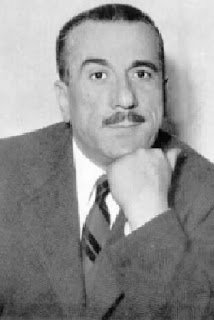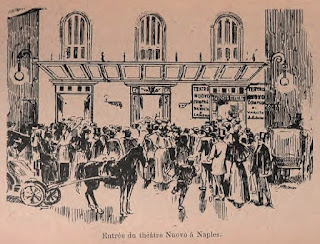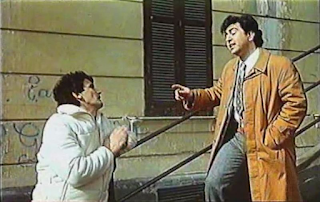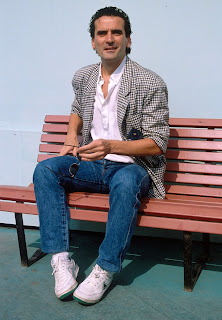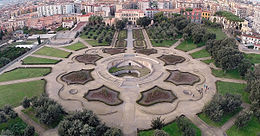Much-loved performer began theatrical dynasty
.jpg) |
| Scarpetta's comic plays were hugely popular with Neapolitan audiences |
Fascinated by the commedia dell’arte and Neapolitan puppet theatre character Pulcinella, Scarpetta was the writer of more than 50 dialect plays in the comedy genre, creating his own character, Felice Sciosciammocca, a wide-eyed, gullible but essentially good-natured Neapolitan who featured prominently in his best-known work, Miseria e Nobiltà (Misery and Nobility).
His plays made him wealthy, although his standing was damaged towards the end of his career by a notorious dispute with Gabriele D’Annunzio, the celebrated playwright and poet with aristocratic roots who was a considerable figure in Italian literature.
A showman with a reputation for throwing extravagant parties, Scarpetta led a complicated personal life that saw him father at least eight children by at least four women, of which only one was by his wife, Rosa De Filippo.
One of his relationships, with Rosa’s niece, Luisa, a theatre seamstress, produced three children - Eduardo, Peppino and Titina De Filippo - central figures in an Italian theatre and film dynasty in the 20th century.
Another daughter, Maria, was the child of an affair with a music teacher, while a relationship with his wife’s half-sister, Anna, produced the journalist, poet and playwright, Ernesto Murolo, who co-wrote a number of famous Neapolitan songs with the composer Ernesto Tagliaferri, and another actor, Eduardo Passarelli.
His only legitimate son, Vincenzo, also became an actor, and later a director, playwright and composer. The part of Peppeniello in Miseria e nobiltà was written specifically for Vincenzo.
 |
| Scarpetta in character as his own creation, Felice Sciosciamocca |
By joining a theatre company at the age of 15, Scarpetta believed he could help bring money into the family after his father’s poor health led to them falling on hard times.
He soon met Antonio Petito, a playwright and actor who at the time was one of Naples’s most famous interpreters of the Pulcinella character, and joined his company at the Teatro San Carlino on Piazza Castello, near the Castel Nuovo. It was while working with Petito that he created Felice Sciosciammocca, with whom Petito was so impressed he began to write plays with Pulcinella and Sciosciammocca as the main characters.
Petito’s Pulcinella had evolved from the rather simple, slow-witted character of tradition to a sharp, insolent and above all instinctively cunning individual. Where Pulcinella was working class, Scarpetta’s middle-class Sciosciammocca was a perfect foil.
His partnership with Petito ended with the latter’s death in 1876, after which he worked briefly in Rome before returning to Naples. After a period performing at the Teatro Metastasio on the city’s pier, he returned to San Carlino as manager, investing much time and money in saving it from impending closure and restoring it.
San Carlino would in 1884 be demolished to make way for a new urban square, the Piazza Municipio, as part of a rehabilitation project for the area, which had become rather run down.
Nonetheless, Scarpetta had enjoyed a number of huge successes with his own plays, notably Miseria e Nobiltà, but also Il medico dei pazzi, na santarella, Lo scarfalietto, Nu Turco Napulitano and O miereco de’ pazzi.
.djvu.jpg) |
| Na santarella was one of Scarpetta's most successful plays |
La Santarella hosted a huge party each year on the occasion of his daughter Tatina’s birthday, to which Scarpetta invited actors, directors, journalists, writers and poets for a celebration that traditionally ended with a spectacular fireworks display that was visible all over the city.
Rosa was happy to accommodate all of Eduardo’s various children. Indeed, after his affair with the music teacher, Francesca Gianetti, it was Rosa who was said to have rescued the child, Maria, from the religious institute to which she had been abandoned. Rosa, in fact, had a son of her own, Domenico, whose father was none other than the King of Italy, Vittorio Emanuele II, with whom she had a relationship as a teenager before marrying Scarpetta.
Scarpetta’s fortunes began to decline when his Teatro Salone Margherita, a cabaret theatre in the basement of the then newly-built Galleria Umberto I in the centre of Naples began to suffer financially. At the same time a play he had written as a parody of a play by Gabriele D’Annunzio which prompted the well-connected D’Annunzio to accuse him of plagiarism and take him to court for staging the play without permission.
In the event, the court case went in the favour of Scarpetta, who successfully argued that his play, Iorio’s Son, was not a copy but a comic send-up of D’Annunzio’s tragedy, Iorio’s Daughter, but the case - and the panning that Iorio’s Son received from the critics - left Scarpetta embittered and though he continued to write he decided he would no longer act.
He died at the age of 72 in 1925 and after an elaborate funeral in which his body was placed in a crystal coffin, he was buried in the De Filippo-Scarpetta-Viviani family tomb at the Cimitero Monumentale di Poggioreale in Naples, close to what would become the site of the city’s international airport at Capodichino.
 |
| Scarpetta's impressive villa in the Vomero district, which he named La Santarella |
Vomero, where Scarpetta had his impressive villa, La Santarella, is a middle class largely residential area of central Naples but has a number of buildings of historic significance. The most dominant, on top of Vomero hill, is the large medieval fortress, Castel Sant'Elmo, which stands guard over the city. In front of the fortress is the Certosa San Martino, the former Carthusian monastery, now a museum. Walk along the adjoining street, Largo San Martino, to enjoy extraordinary views over the city towards Vesuvius. Vomero's other tourist attraction is the Villa Floridiana, once the home of Ferdinand I, the Bourbon King of the Two Sicilies. Surrounded by extensive gardens, the building now houses the Duke of Martina National Museum of Ceramics.
 |
| Chiaia is one of the more upmarket areas of the city of Naples |
Chiaia, where Scarpetta’s wealth enabled him to build a large family house, is a neighbourhood bordering the seafront in Naples, roughly between Piazza Vittoria and Mergellina. It has become one of the most affluent districts in the city, with many of the top fashion designers having stores on the main streets. It is the home of a large public park known as the Villa Comunale, flanked by the large palazzi along the Riviera di Chiaia on one side, and the sweeping promenade of the Via Francesco Caracciolo on the other. The area is home to many fine seafood restaurants and has become a popular nightlife destination for well-heeled young Neapolitans.
Also on this day:
1925: The birth of actor and voice-dubber Corrado Gaipa
1955: The birth of footballer and coach Bruno Conti
1960: The birth of rock musician Luciano Ligabue
1980: The birth of dancer Flavia Cacace
